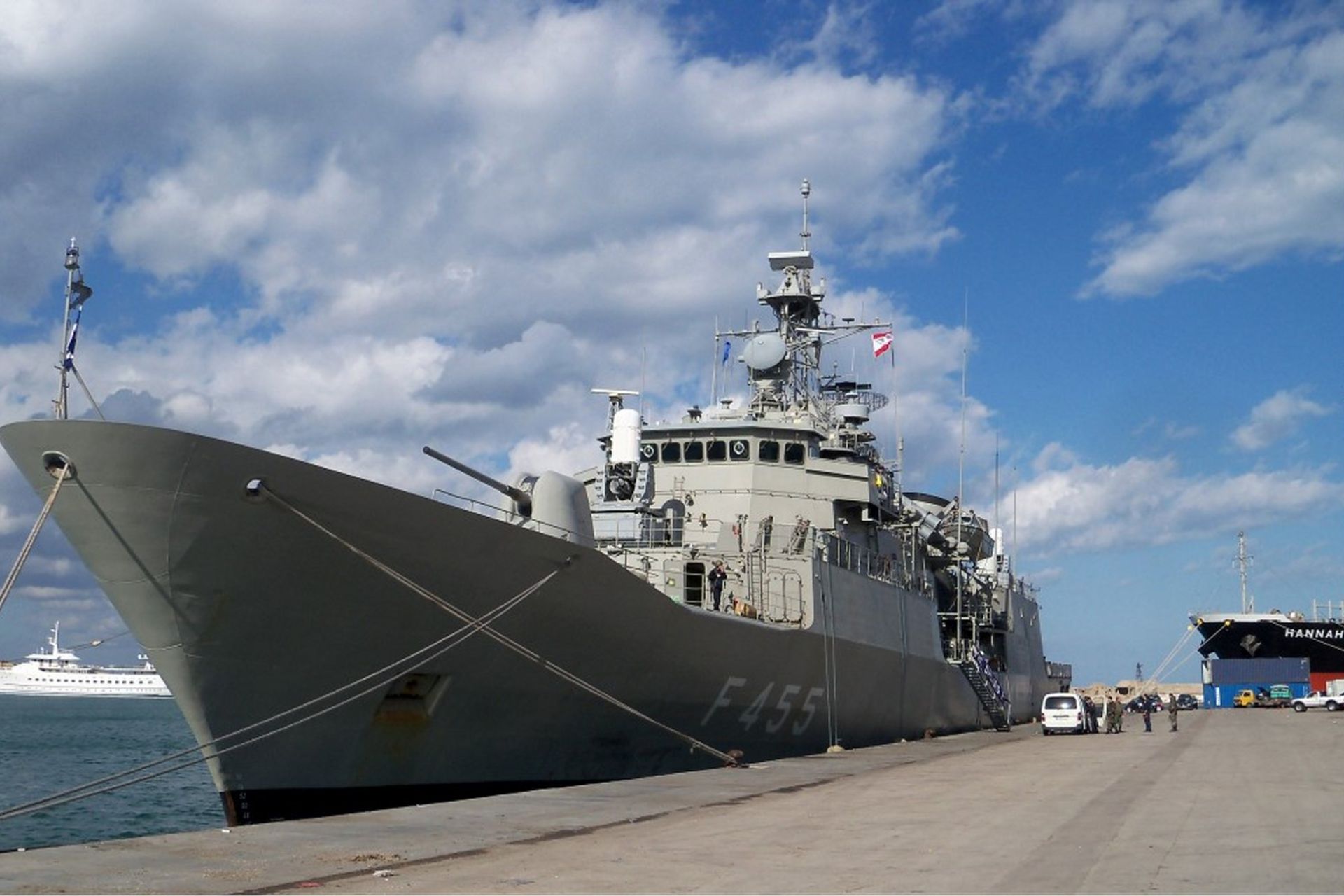Breaking News
Greek Defense minister announces deployment of advanced Centaure anti-drone system on MEKO frigates.
According to information published by Flight on September 7, 2024, Greek Minister of Defence Nikos Dendias revealed that the advanced anti-drone system Centaure will be integrated into all MEKO-class frigates of the Hellenic Navy.
Follow Army Recognition on Google News at this link

Greek Hydra-class frigate HS Salamis. (Picture source: Hellenic Navy)
The system, developed through a collaboration between the Hellenic Airspace Industry and the Hellenic Defence Systems (ELKAK), has already been deployed aboard the frigate Psara, currently operating in the Red Sea.
The Psara successfully engaged hostile drones in combat conditions, marking the first real-world test of the Centaure system. Having passed both technical evaluations and live operational trials, the system is now set to enter production for widespread deployment across the MEKO-class frigates.
The growing threat posed by unmanned aerial vehicles (UAVs) has become a key concern for the Hellenic Navy, particularly in regions like the Red Sea where it faces hostile drone activity. Greek frigates, such as the Hydra and Psara, have been deployed as part of the EU's Aspides operation to protect commercial vessels from attacks, often launched by Houthi rebels.
Drone threat
Unmanned Aerial Vehicles (UAVs) pose a significant and growing threat to naval operations around the world, transforming both the offensive and defensive strategies of modern navies. These drones can carry out a wide range of missions, including surveillance, reconnaissance, and precision strikes, often at a fraction of the cost of traditional naval assets. This has made them a favored tool in asymmetric warfare, where smaller or non-state actors seek to challenge more powerful naval forces.
In regions like the Red Sea and the Black Sea, UAVs have been increasingly employed to disrupt commercial shipping and naval operations. Houthi rebels in Yemen, for example, have used drones to attack vessels and infrastructure, significantly affecting trade and military operations. These UAVs often operate in "swarms," making them harder to defend against, as traditional naval defenses struggle to detect and counter large numbers of small, agile targets. Exercises like NATO’s REPMUS have focused on developing counter-UAV capabilities to tackle these swarm threats, which could overwhelm existing missile defenses.
Navies are responding by developing new countermeasures, such as radar systems optimized to detect small drones and integrated combat management systems that can track and engage these threats. For instance, the U.S. and Royal Navies have successfully intercepted multiple drone attacks in the Red Sea.


























